It doesn't matter in which form they present themselves - rainy, sunny, typhoon-battered - Hong Kong summer days are a challenge for everyone who likes to take long walks. Today is one of those splendid afternoons in which the glistening sun floods the city with its glowing light and occasional specks of clouds hang in the blue sky. Despite the scorching heat I decided to take a walk around Hong Kong Central library. The temperature stood at 34 degrees Celsius, but the real feel was 39!
How to Get to Hong Kong Central Library
Hong Kong Central Library is located on 66 Causeway Road, Causeway Bay. However, Tin Hau MTR Station is slightly closer to the library than Causeway Bay Station. It takes only about five to ten minutes from Tin Hau to the library. I started my walk from Tin Hau MTR Station.
Tin Hau Temple
Tin Hau Temple is just a few minutes walk from the MTR station of the same name (although the heat makes the distance feel longer). Check the map below for directions.
Tin Hau Temple was founded back in 1747, but the present construction was built in 1868. According to the legend, the temple was erected after an incense burner was found floating on the sea. This episode gave rise to one of the names with which Hong Kong was known before the British arrived: Hong Heung Lo (traditional Chinese: 紅香爐; simplified Chinese: 红香炉; pinyin: hóng xiānglú; literally: 'Red Incense Burner').
The main altar of the temple is dedicated to the Sea Goddess Tin Hau. Chinese deities can be a little confusing sometimes, in fact Tin Hau is actually the same Goddess that in large parts of mainland China and in Taiwan is known as Mazu ( 馬祖, pinyin: mǎzǔ), but in Hong Kong she is called by the Cantonese name Tin Hau (天后, Mandarin: Tiānhòu), which literally means 'Empress of Heaven'.
A side altar is dedicated to the Chinese God of Wealth (財神; Cantonese: Tsoi San; Mandarin: Cáishén).
 |
| Tin Hau Temple. You can see a poor woman using her umbrella to protect herself from the scorching sun, a usual sight in East Asia |
 |
| I love the mix of green vegetation, old traditional architecture, huge buildings and the blue sky |
 |
| Incense burners |
 |
| The main altar |
Streets Around the Library and Lin Fa Kung (Lin Fa Temple)
The streets around the library are a mix of trendy cafes and restaurants, small workshops and factories, and dark alleys where street vendors sell vegetables and other kinds of food.
 |
| Chinese 'Rhenish' church. Honestly, I don't know what that means |
 |
| Classified, a nice cafe. On the right you can see Lin Fa Temple |
 |
| Another cafe I like - Blue Lemon |
 |
| You might have noticed that in the Chinese-speaking world buildings have names. This one is called 'China Tower', but it's actually just a normal building |
Lin Fa Kung (traditional Chinese: 蓮花宮; simplified Chinese: 莲花宫; pinyin: liánhuā gōng, lit. "Lotus Temple") is a small temple located at the end of Lin Fa Kung Street. It was originally built in 1863, during the Qing Dynasty, and was rebuilt in 1986 and 1999. The temple was mainly dedicated to Kwan Yin (also known as Kwun Yam; traditional Chinese: 觀音菩薩; simplified Chinese: 观音菩萨; pinyin: Guānyīn Púsà; literally "Bodhisattva Guanyin" ), the Goddess of Mercy.
 |
| Lin Fa Kung, a small temple but with a unique architecture |
 |
| One of the entrances. You can see two young well-dressed men praying |
 |
| A nice Japanese restaurant: Wabi Sabi |
 |
| Side alleys often contrast with the glamour and wealth Hong Kong is renowned for. |
Public Toilets
It may sound weird, but I want to seize this chance to praise Hong Kong's public toilets. In Europe, toilets seem a most rare and precious thing - if you can find them, you usually have to pay. In Hong Kong, there are free and clean toilets in every department store (and bear in mind, in Hong Kong department stores are literally everywhere), and there are many free public toilets that are perhaps not that clean but still very useful. Today, on this hot and sunny afternoon, I was grateful for having the chance to refresh myself in a public toilet after my long walk. This is something that especially countries like Italy and Greece, where there are many tourists and the weather in the summer is hot, should learn from.
Victoria Park
Opposite the library is Victoria Park, which is not only a park but a sports ground, as well. You can see people jogging or playing team sports until late in the evening.
 |
| A statue of Queen Victoria, a vestige of Hong Kong's British era |
Hong Kong Central Library
Hong Kong Central Library (香港中央圖書館, pinyin: Xiānggǎng zhōngyāng túshū guǎn) was built in 2001 and it's the biggest public library in Hong Kong. The Hong Kong Central Library is by far the best library I have ever been to. Some people don't like its architecture, but I find it brilliant.
The exterior is quite pleasant, but in my opinion it's the interior that makes this building stand out. It is very spacious, with a good air-conditioning system and large windows that let readers enjoy the natural sunlight. There are many desks, all of which have power sockets, and also couches where people can sit and relax. It provides free internet access, and has a huge collection of books. There are also almost numerous international and Chinese newspapers and magazines.
While I was taking pictures inside the library, a member of the security staff came up to me and told me that it's forbidden to take pictures. She looked very annoyed at first. Perhaps she expected I would make trouble. But I just smiled and apologised, and she became nicer. She gave me a leaflet with all the rules for library users, from which I evince that apart from breathing, reading and using your laptop you can't do anything else. I can't even drink, and in fact I am terribly thirsty right now. There are drinking fountains outside the restrooms; however, it is forbidden to leave your belongings unattended. As you can see, their rules are designed to force you to break them. Anyway, since I had already taken a few pictures, I will just post them, hoping that the security staff will never read my blog.
 |
| Hong Kong Central Library |
 |
| A footbridge connects Victoria Park and the library |
 |
| The escalator in Victoria Park leads up to the footbridge |
 |
| View of the street and the Hong Kong tram from the footbridge |
 |
| Adjacent to the library is another sports ground |
 |
| Whether Queen Victoria like it or not, the Union Jack is gone and it is now the flag of the People's Republic of China that flutters on flagpoles outside Hong Kong public buildings |
 |
| The entrance hall with the three fancy lifts |
 |
| There are many areas especially designed for kids, and a lot of families come here. The Hong Kong government fortunately understands that details which one could deem superfluous also improve residents' standard of living |
 |
| The fifth floor is the newspaper and magazine area, and many people take advantage of this opportunity to learn more about Hong Kong and the world |
 |
| I love the windows. On the opposite side, you can see a wonderful view of Kowloon skyline. Unfortunately, today the curtains were drawn on that side because of the sun |
 |
| I like the choice of bright colours |
I am so enthusiastic about this library because I remember the time when I was a student in Berlin and spent many hours in the Grimm-Zentrum, the main library of my university. Although the name refers to the Grimm Brothers, the fact that the library was 'grim' has become a running joke. The Grimm-Zentrum is dark, with a terrible air-conditioning system, small windows, and with black, brown and dark-green as its main colours. No one thought of making that library pleasanter by, perhaps, arranging plants or using more cheerful colours. Moreover, although the building is huge, the desks occupy just a small part of it, so that there is a constant lack of available seats; and there is only one functioning lift, which is hidden where no one can see it.



































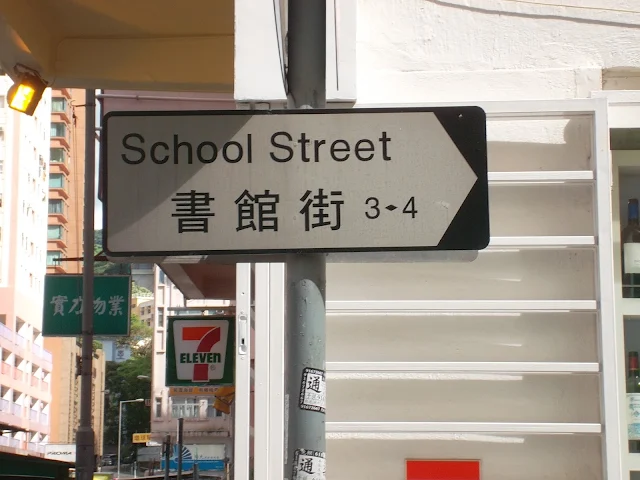




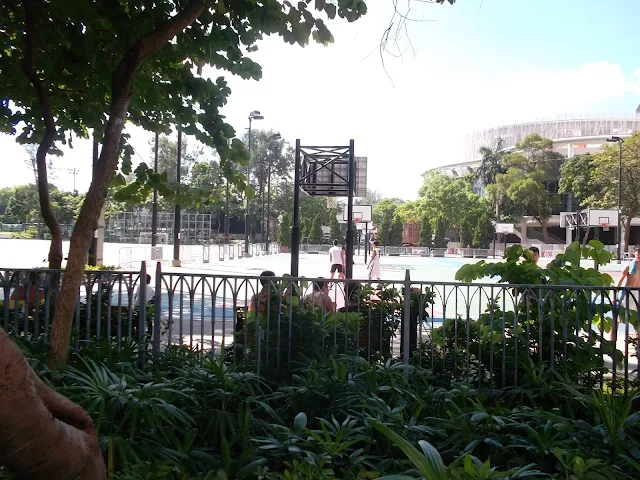




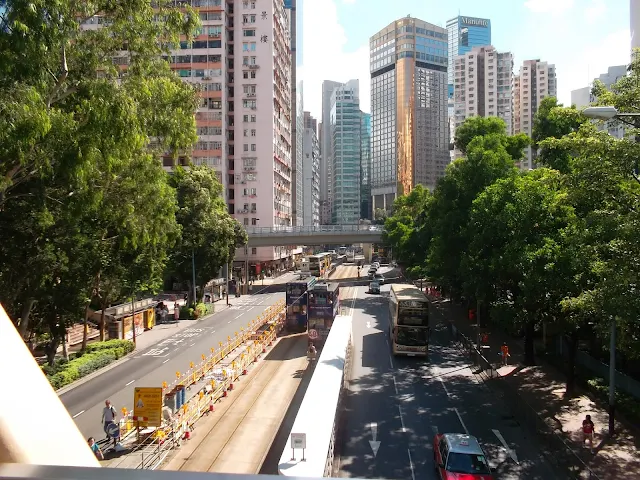

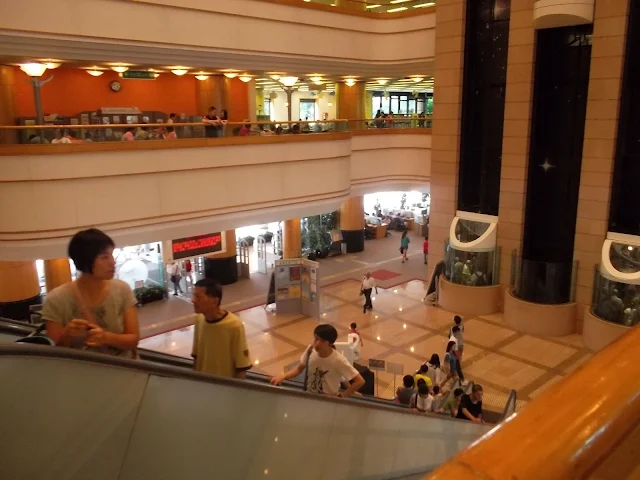

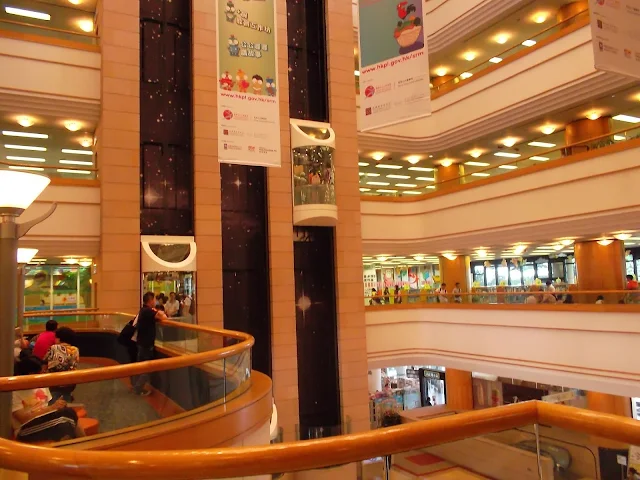


Comments
Post a Comment